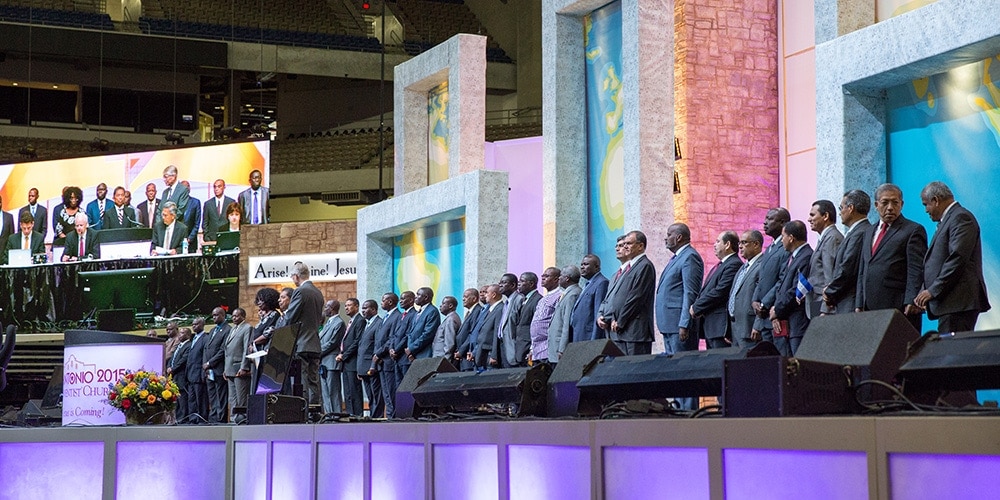
Adventist Review / ANN
Moving to streamline the church’s work at a time of rapid growth, delegates opened the General Conference session on Thursday by officially approving the addition of an unprecedented 35 new union conferences to the Adventist world church.
The delegates easily approved the administrative units—most of which are located in Africa, Central America, and South America—by holding up yellow cards in a vote in the cavernous Alamodome stadium in San Antonio, Texas.
The vote was needed to officially confirm unions that have been organized since the last General Conference session in 2010 or are slated to be organized in the near future.
“The high number of new unions is unprecedented in the history of the Seventh-day Adventist Church,” G. T. Ng, executive secretary of the General Conference, told the Adventist Review earlier. “It is a reflection of the church growing with breakneck speed around the world.”
Most of the new unions came as a result of rapid church growth. The Adventist world church has a membership of 18.5 million, compared to the 16.3 million reported at the 2010 General Conference session.
In order to more efficiently nurture growing membership, it has become necessary to divide existing unions, establishing two new entities instead, church leaders said. Zambia, whose membership passed 1 million in April 2015, is an example of this, and its Zambia Union Conference will split into two unions during a meeting on September 20 to 23.
Other regions have advanced from union mission to union conference, indicating maturity in finance and leadership.
The 35 unions surpass the previous record of 22 unions added in 2010 and 22 unions added in 2005. Only 9 unions were added in 2000.
The new unions were presented to the delegates on the opening morning of the 10-day General Conference session, which runs through July 11. The respective division secretaries introduced the respective union presidents on the Alamodome’s stage.
The majority of the new unions —22— are in the three church divisions in Africa, Rosa Banks, a General Conference undersecretary and liaison to the three African divisions, told delegates.
Among the new unions is the Middle East and North Africa Union Mission, which was formed in 2012 with the intention of strengthening the focus of reaching the Middle East and North Africa.
“By uniting the former Trans Mediterranean Field and the former Middle East Union into a new union directly attached to the General Conference, it has been possible to enhance the efforts to reach the population in this part of the 10/40 window,” said Harald Wollan, associate secretary for the General Conference who serves as liaison to the Middle East and North Africa Mission. “Under the able leadership of the current administration, wonderful things are happening in this challenging part of the world.”
Homer Trecartin, president of the Middle East and North Africa Union Mission, said it was a challenge to unite pieces of various divisions into the new union, but the result is worth the effort.
“It takes primarily Muslim countries, puts them in one group, and allows us to focus on one part of the world,” he said on the sidelines of the General Conference session.
The Trans-European Division also has a new union in Finland. The constituency in the Finland Union decided to reorganize the church’s work in that country for efficiency sake, transforming from a union conference to a union of churches conference, Wollan said.
“By eliminating administrative entities, it becomes possible to operate with fewer administrative positions, thus getting more pastors out in the field,” he said.
Wollan said the establishment of new unions matters to every church member because it helps the church better fulfill its mission of preparing people for Jesus’ return.
“The church was organized for mission. The more streamlined and efficient the leadership of the church, the better membership care and the more efficient it can become in evangelism,” he said. “We all share a responsibility in witnessing about the soon-coming Savior.”